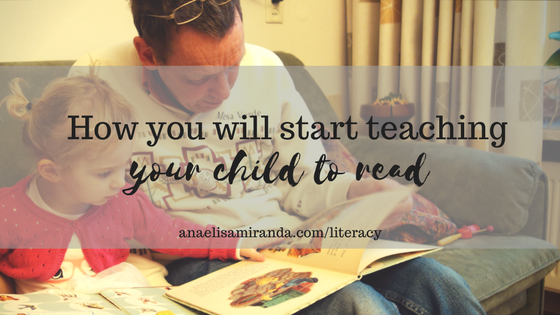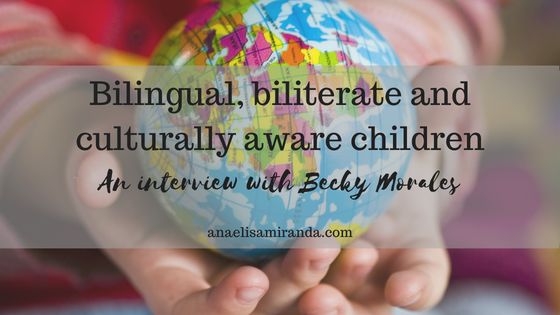The information below first appeared in the pamphlet ‘Raising Bilingual Children’ written by Antonella Sorace and Bob Ladd in May 2004 and was published by ‘The Linguistic Society of America’. It has been reproduced here in its entirety with the Society’s permission.
For further details you can email the ‘The Linguistic Society of America’ on lsa@lsadc.org or visit their website at http://www.lsadc.org.
Sorace, A. and Ladd, D.R. 2004. Raising bilingual children. Series: Frequently Asked Questions, Linguistic Society of America.
Why want bilingual children?
There are many reasons, but the two most common are:
-
-
- The parents speak different languages (say, an American woman and a Turkish man).
- The parents speak the same language, but live in a community where most people speak something else (say, a Korean couple living in the UK).
In the first case, both the mother and father may want to be able to use their own language when talking to their children. This is the bilingual home situation. In the second, the parents may want to be able to use their own language at home even though their children also need to function in the world outside the front door. This is the bilingual setting situation. Our own situation is an Italian/English bilingual home in an English-speaking setting, and some of what we say here is based directly on our experience bringing up bilingual children.
Don’t children get confused when they hear two languages spoken around them?
The short answer is no. Children are incredibly sensitive to the different ways people speak. Even when they only hear one language, they learn very quickly about differences between the way men and women talk, the difference between polite and impolite ways of talking, and so on. For children, the bilingual situation is just a matter of another difference between people!
Fifty years ago educators throughout North America used to tell immigrant parents that it was better for their children’s schooling if they spoke English at home. Some researchers thought that early exposure to two languages put children at a disadvantage. Newer research tells us that this is not so, and there may be advantages to being bilingual (in addition to knowing more than one language), such as more flexible thinking. The disadvantages that earlier research found were generally economic disadvantages, linked to the hardships of immigrants’ lives.
Bilingual development sometimes results in slightly slower language development than for some monolingual children. Our older child was still saying things like ‘Where you are?’ instead of ‘Where are you?’ in English at four and a half. This is a normal developmental stage for monolingual English children, but they usually figure out that they have to say ‘Where are you?’ by the time they’re three or four. Our older child just took a little longer.
Don’t bilingual children ever mix their languages up?
Like adult bilinguals, bilingual children often use words from one language when speaking the other. (This is called code-switching.) But this doesn’t mean they are confused about which language they are speaking. In our Italian-English bilingual home, a lot of our food vocabulary is Italian, and we use this even when we’re speaking English (and when English words are available). So we’ll talk about pollo instead of chicken and sugo instead of sauce. Yet in speaking to monolinguals, bilingual children are careful to use only the relevant language.
So how do we start teaching our children two languages?
The main thing to keep in mind is that parents don’t really ‘teach’ children to speak, any more than they teach them to walk or smile. The most important things in language development are exposure and need. If children are exposed to a language in a variety of circumstances with many different people from the time they are born, and if they feel they need the language to interact with the world around them, they will learn it. If they are exposed to two languages in varied circumstances with different people from the moment they are born, and if they need both languages to communicate with the people around them, they will learn both.
Do you really mean that if our children are exposed to two languages from birth they will learn both, just like that?
No, but children can do this with no difficulty, and it doesn’t do them any harm. The hard part is making sure they have enough natural exposure to both languages. Most of the time, one of the two languages you want them to learn will be “more important” somehow, and the trick is to provide enough opportunities for them to use the “less important” one in a way that isn’t forced or artificial. The best way, if you can manage it, is to put children in situations where only the “less important” language is used so that there is no temptation to mix languages or revert to the “more important” language.
What do you mean by saying that one language is “more important”?
One language is likely to seem more important to children when that language is needed more frequently than the other. For example, suppose the American woman and Turkish man in the bilingual home speak English with each other. The children will notice that English is used in cases where Turkish isn’t and think that English is “more important”. But if the same family moves to Turkey, the children will notice that Turkish is used in lots of cases where English isn’t, and may decide Turkish is “more important”. Some children are very sensitive to these differences and may be reluctant to use the “less important” language—especially if other children don’t use it. Others don’t seem to mind.
When we talk about one language being “more important” here, we’re only talking about the children’s point of view! Nonetheless, many adult bilinguals are “dominant” in one of their languages. Even if the differences between their two languages are subtle, most bilinguals feel slightly more at home in one language than the other in certain settings or for talking about certain topics.
Would it be better to start teaching the second language after children have a good start on the first?
No, definitely not, especially in the bilingual home situation where the second language is likely to seem “less important” to the children anyway. Introducing the second language later is just about guaranteed to make them think it’s less important and not worth the effort.
On the other hand, in the bilingual setting situation (say, the Korean couple living in the United States), there isn’t any harm in letting children’s exposure to English begin naturally and gradually. As long as the family stays in the US and the children go to American schools, there is no risk that they will fail to learn English. Actually, the more common problem with the bilingual setting situation is that the children sometimes reject their home language in favor of the outside language.
My partner and I speak different languages. Should we only speak to our children in our own language if we want them to be bilingual?
Many experts recommend the “one-parent-one-language” method for a bilingual home. The idea is that Mommy (or Mamma, or Mutti) always speaks her own language with the children, and Daddy (or Papa, or Vati) always speaks his own language with them. This is a good basis for a successful bilingual home, but it’s not the only one, and even one-parent-one-language can go wrong.
What are some of the problems with one-parent-one-language?
One problem can be balance. Children need to hear both languages often and in a variety of circumstances. If they never hear the ‘less important’ language except from one parent, they may not get enough exposure for that language to develop naturally. It is especially true that when both parents understand the ‘more important’ language, the children don’t feel they need the ‘less important’ one.
In these cases it is essential to find other sources of exposure and other ways of creating the sense of need. Monolingual grandparents can be especially helpful! Can you enlist a cousin or grandmother or a paid babysitter who speaks the other language to look after the children? Is there a daycare or playgroup where they can hear the other language? Can you get videos and story tapes in the other language? All of these can make a big difference; especially exposure that involves interaction with other people, not just watching TV. When our children were small, we did things like this to reinforce Italian in a largely English-speaking setting.
Another problem is keeping the situation natural. If children feel that they are being forced to do something weird or embarrassing, they will probably resist it. Explicit rules say, speaking one language on some days and the other on others can be very hard to enforce and can help create a negative attitude.
Still another problem is exclusion. If one of the parents doesn’t speak the other’s language (in our example, suppose the American woman doesn’t speak Turkish), the children will know that every time they say something in Turkish to their father they are excluding their mother from the conversation. This may make children reluctant to speak one of the parents’ languages when both parents are present. In our experience, a bilingual home is more likely to succeed if both parents at least understand both languages. That way, nobody is ever excluded from a family conversation.
What about siblings?
The arrival of a second child can upset the language balance in a bilingual home, and it’s common for a second child to be less fully bilingual than the first. Usually the first child speaks to the second in the ‘more important’ language, increasing the exposure the second child gets to that language and decreasing the sense of need for the ‘less important’ one. Think about what you want to do about this in advance. Come up with a strategy that fits your own situation, but it’s probably worthwhile to try to enlist the older child or children to promote the ‘less important’ language in your home situation.
My children used to speak our home language just fine, but now that they’re going to school, they mix it up with English all the time. What can I do?
Relax. Language mixing is normal where everyone speaks both languages. It doesn’t mean that the children will forget one language, and it doesn’t mean that they can’t tell the difference any more between two languages. If you scold them for speaking English it may create a negative attitude about the home language and actually make things worse. Instead, create natural situations where the children really need the home language: like calling on those monolingual grandparents again!
You can understand this kind of language mixing if you keep in mind that simple exposure is an important ingredient of children’s language development. When your children were small, they were probably more exposed to your home language – say Korean – than they were to English. Now that they are going to school, they are exposed only to English for hours a day, and they are learning all kinds of new words and new ways of using language, but only in English. They probably don’t know the Korean word for ‘notebook’ or ‘social studies’ or ‘principal’. When they use an English word in a Korean sentence, tell them what it’s called in Korean rather than worrying that they’re losing their home language. Remember, even if they end up with English as their dominant language, they can still be perfectly competent Korean speakers as well.
Further reading
Baker, Colin. 1995. A Parents’ and Teachers’ Guide to Bilingualism. Multilingual Matters.
Grosjean, François. 1982. Life with Two Languages. Harvard University Press.
Harding-Esch, Edith, and Philip Riley. 2003. The Bilingual Family: A Handbook for Parents. 2nd edition. Cambridge University Press.




